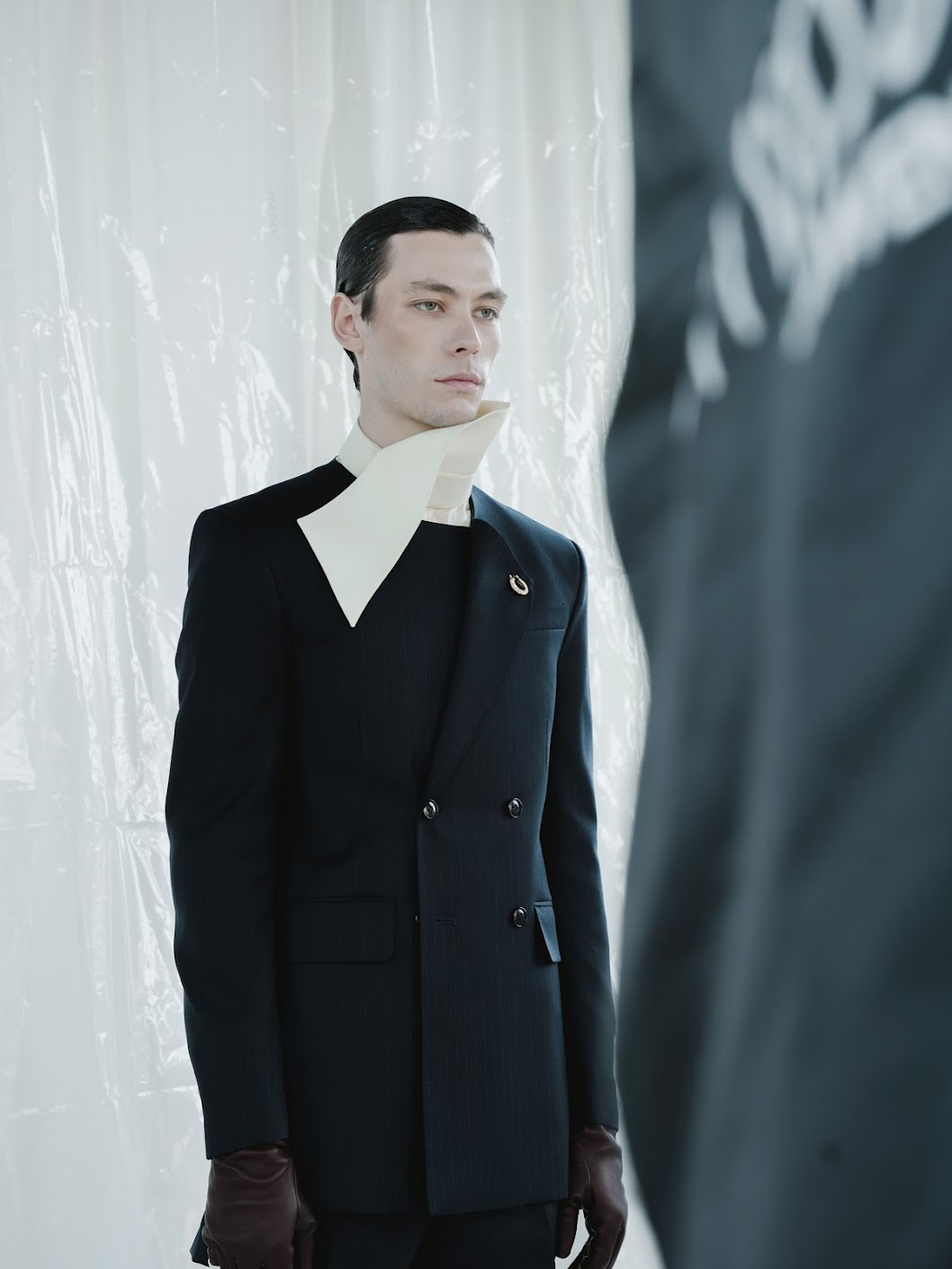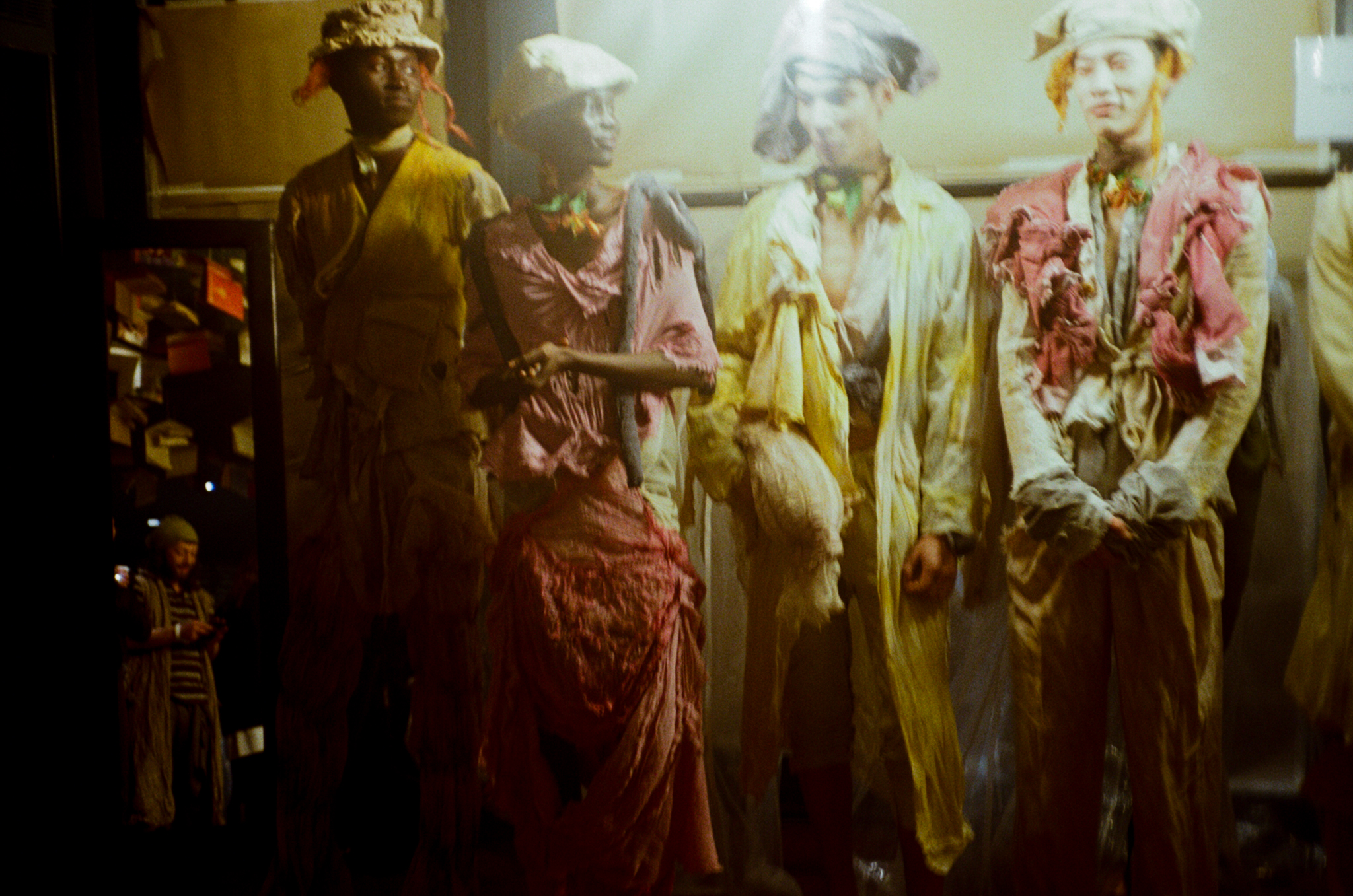
Because Meets | Sept 20, 2025
Kyle Ho’s First Fashion Show

Because We're Obsessed | Feb 26, 2025
LFW Standouts

London Fashion Week | Sept 23, 2025
LFW SS26 Highlights: Part 1


Sit down with Tablescaper Rosie Hediye
London-based culinary concept designer and founder of Masa, Rosie Hediye is in a league of her own making
In a post-Covid world where the ritual of dining has become a cherished ceremony, tableware brand Masa emerges as a thoughtful meditation on how we gather, share, and create atmosphere.
Foodie influencers are dominating the digital space, becoming some of the most viral stars in content creation. Platforms like Instagram and TikTok are bursting with short-form, snappy videos that captivate millions, and culinary content creators are highly sought-after. Rosie Hediye, the founder of the tablescaping initiative, has tapped into a niche rise of content by focusing solely on why consumers love these videos so much. The brand is driven by an urge to create genuine community, and works to reflect what consumers are looking for today. That’s a reinforced sense of connection built naturally off shared spaces, and whats better a place to learn about each other than over a meal. Having already partnered with a range of corps such as the dating app Feeld, The Big Hoof mental health foundation, Sifali Skincare, and Green Place Studios, Masa is just beginning.
Because London sat down with Rosie to chat about the moment that sparked Masa’s creation, the crosscurrents of heritage and hospitality that shape its vision, and why the act of setting a table has become one of the most resonant cultural expressions of our time.
Can you take us back to the moment you decided to create Masa, what was the spark?
In 2022, shortly after moving to London, I started working with a Depop brand in their studio and store. The founders would travel to Italy to source vintage clothing, and every so often they’d return with unique tableware to sell: salt and pepper shakers, ashtrays and drinking glasses. They once brought back an asparagus dish, which I instantly fell in love with and to this day regret not buying. It didn’t take long for me to realise that my heart leaned more towards tableware and interiors than clothing and fashion, which was originally why I started working there.
I began to build my own tableware collection. I wanted to find pieces that told a story and reflected my personal style. I began sourcing wherever I could, after work on eBay, days off in charity shops, quaint stores in little towns outside of London, and markets on weekends. Slowly, I curated a collection of tableware that felt truly mine. But I never wanted it to be just about selling these finds; I had grown too attached to them. After hosting a few dinner parties for friends, I discovered that styling the table was just as meaningful as the menu. The ritual of arranging each piece, layering and creating an atmosphere became an addictive process. It was clear to me that dining should be more than just placing a knife and fork on the table - it could be a curated experience that elevated every meal.


Masa means “table” in Turkish. How has your heritage and relationship with hospitality shaped the way you curate experiences?
Heritage runs quietly beneath everything I make. Growing up in England, I always felt more connected to my English roots, while my Turkish heritage remained distant. Through my work, I’ve been able to weave elements of both cultures together - a way of reclaiming a part of myself that once felt lost. Culturally, my Turkish family places a deep value on community - gathering around the table, sharing meals and always looking out for one another. This spirit is at the heart of masa: community, collaboration, and creation.
Similarly, I’ve been in hospitality since I was 15 - working in bakeries, FOH at restaurants, making pizzas at festivals, and even as a sushi chef whilst studying at university. Now working as a restaurant PR, I collaborate with a diverse range of chefs and restaurants, helping them grow in a competitive yet exciting industry. It’s rewarding, and I feel lucky to do it alongside such a talented and supportive team. I think by working across all areas of the hospitality industry, you gain a 360-degree perspective on curating experiences and understand what people truly want.
Tablescaping has become such a visual and cultural movement. Why do you think it’s resonating now more than ever?
You probably don’t want to hear it, but I think it comes back to the impact of COVID-19. Before the pandemic, most of us took our freedom for granted; something as simple as sharing a meal with friends became illegal in 2020. Even though many of us have adjusted to life after the pandemic, I think those years rewired us in subtle but lasting ways. We saw how quickly everything could change and how little control we truly have as individuals. That’s why I see tablescaping as more than just a trend - it feels like a cultural shift. It’s about recognising that everyday moments, like sitting down to eat, deserve to be cherished. It’s a way of making the most of ordinary life, turning something routine into something meaningful.
How do you see the line between food, design, and art blurring in your work?
Tablescaping allows you to be creative and experiment with food, by combining tableware and everyday objects to create something unique. It’s where the chef’s menu and the design of the table meet. Art is therefore built through food that tells the story and design that creates the atmosphere to shape the moment.
Can you describe your process for building a table story, from the first idea to the final setting?
The process for creating a tablescape is anything but linear, rather messy to be honest! I begin with inspiration, while platforms like Pinterest can be great for visual reference, I tend to avoid them at the beginning. Instead, taking inspiration from everything around me, people, places and conversations. The menu plays a huge role in shaping the story, because the mood of a table should complement the food. I consider taste, smell, and touch as much as sight, letting these senses guide my mood boards and sourcing choices. Once the vision is clear, I start gathering the materials and elements needed to bring it to life.


Collaboration seems at the heart of your work. What makes a partnership work well creatively?
Successful collaborations are built on transparency, a shared vision, and a strong work ethic. When collaborating, it’s important to remember that this isn’t just your project; it’s shared, so you must listen to the other people involved. At the same time, I recommend researching your collaborator beforehand to ensure that your strengths complement each other.
How do you balance aesthetic with authenticity, making sure it’s not just “for Instagram”?
Good question - It’s about balance. You want things to look considered, but they also need to feel genuine and practical, not staged. I styled a Spring Greens-inspired dinner for Hazbabz Supper Club back in May. We used seasonal produce within the tablescape design, as well as the menu. I made vases out of cabbages, with vegetables like leeks and broccolini hanging above guests whilst they dined. At the end of the evening, everyone took some vegetables home with them, along with a small bottle of homemade elderflower cordial. It meant the setting wasn’t just decorative, but sustainable and thoughtful.
Beyond the table, you’re building communities. How do you foster that sense of connection around your events?
I focus on creating spaces that feel warm and approachable, where people don’t just attend - they genuinely connect. Food naturally breaks down barriers, and sharing a table helps conversations flow and friendships form. Over time, those small connections grow into a larger network of people who inspire, support, and celebrate one another. I also see masa events as a platform for ongoing collaboration: people reach out afterwards, we work together again, or recommend each other for opportunities. This ongoing exchange keeps the community in motion and reinforces that sense of connection.
What table-scaping trends do you see coming forward right now?
We’ll see a shift away from overly curated, Instagram-perfect aesthetics toward more thoughtful, experience-driven design. Syling will focus less on creating static “tablescapes” and more on crafting environments that engage all the senses. On the table, this means moving beyond delicate, minimalist glassware to pieces with more substance and personality. I’d like to see thicker glassware with hints of colour and artisanal character brands like Gather Glass capture this direction well, I love their pieces.
What’s your biggest “no-no” when it comes to setting a table?
Overstyling - too many contrasting themes and a lack of considered creative direction.
What’s your best advice for being a great host?
If you’re hosting a dinner, give yourself plenty of time, prep early and keep things simple by using fresh, seasonal ingredients. Don’t force anything; if it’s not tomato season, skip the tomatoes. Buy your flowers in the morning, then curate your tablescape before lunch. Getting these details done early saves a lot of time and stress later on, as you’ll want to focus fully on cooking once the day gets going. I enjoy creating personalised name cards from materials I have at home, like red-and-white gingham card that originally came from the inside of a Bonne Maman dessert, or special finds like vintage interior postcards from a charity shop. Each guest gets to take something personalised and unique home with them, which always feels like a thoughtful touch. And of course, always finish with something sweet. I love serving pistachio baklava with coffee or rose mint tea; it’s a small gesture that leaves a lasting impression.
Learn more about Masa and it's work here.
